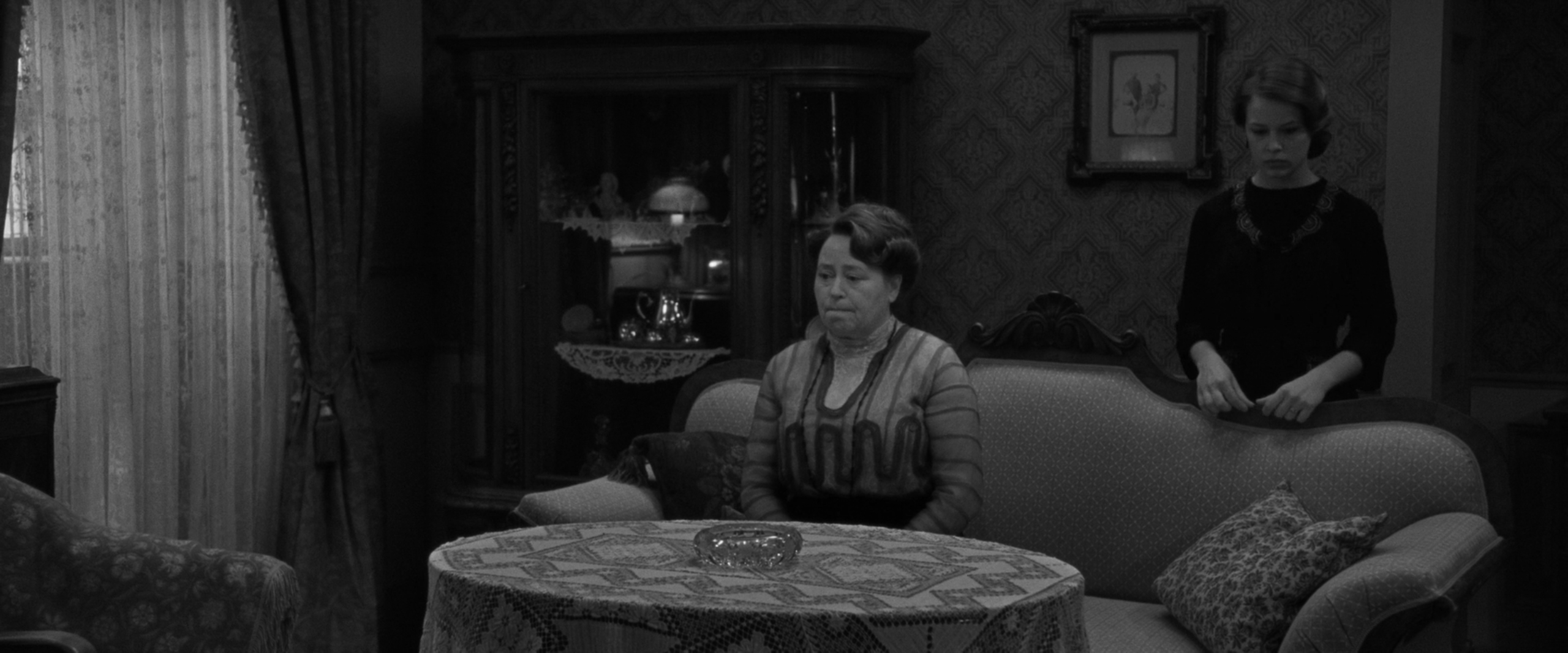The Furniture: Decorating for a Lost Generation in "Frantz"
 Monday, June 19, 2017 at 12:24PM
Monday, June 19, 2017 at 12:24PM "The Furniture" is our weekly series on Production Design. You can click on the images to see them in magnified detail. Here's Daniel Walber on Frantz, newly available on DVD and Blu-Ray.

Sometimes gimmicks work. François Ozon’s Frantz is built up from single stylistic convention, flipped on its head. It’s a black and white drama of Europe in the wake of World War One, but its flashbacks are in color. It’s quite striking, a remarkable collaboration between cinematographer Pascal Marti, production designer Michel Barthélemy and art director Susanne Abel. Even the soggy trenches are more vibrant than the sober landscape of the Armistice.
Frantz begins in 1919, in the small German town of Quedlinburg. Anna (Paula Beer) mourns her fiancé, Frantz, taken from her by the war. She lives with his parents, Hans (Ernst Stötzner) and Magda Hoffmeister (Marie Gruber). Their gloomy lives are shaken by the arrival of a Frenchman, the hesitant Adrien Rivoire (Pierre Niney).
Anna and Magda assume that he must be a friend of Frantz’s from before the war, and invite him into their home...
Nervous and shaky, he looks out of place amid the aggressively sober decor. It feels more like an elaborate tomb, and not just because of the color.
The wallpaper is pleasant and unassuming, regimented floral patterns that match the upholstery. Modestly tasteful art hangs all about the house, small landscapes and family portraits. Everything is in its place.
There are only brief glimpses of the house in color. Anna dreams of Frantz’s return, a fantasy muted by memory in a room dominated by faded shades of brown.
The setting of Quedlinburg is important for two reasons. The first is practical: the town is a UNESCO World Heritage Site for its preserved architecture, completely untouched by the destruction of World War Two.
The second is symbolic. Heinrich Himmler was obsessed with Quedlinburg because of its association with Henry the Fowler, a 10th century monarch considered to be the first German king. This darkness beneath the community’s stern modesty is laid bare by Hans’s trip to the local bar, where a group of leading citizens meet to nurture their vengeful nationalism. One can see the determination to hold onto a historical mythology in the decor, its traditional steins and its German eagle.
Hans rejects all of this, spurred on by his son’s pacifism and internationalism. He accuses himself and his generation of child murder in the name of industry and blind patriotism.
This righteous anger is shared by the film’s stark aesthetic, which follows Anna to France. She sees the evidence of this murder from her train, which passes through the battlefields on its way to Paris. The destruction is overwhelming.
Paris looks nothing like Quedlinburg, of course. But it is under the same colorless cloud. The wallpaper in Anna’s hotel, where Frantz once lived, is a harsh companion. Its garret-like simplicity ruptures the picture in her head, an imagined version of her fiancé’s vie parisienne.
The Louvre is a shock in black and white, the history of European art drained of all its vibrancy.
Eventually Anna tracks Antoine to his family’s country estate, still the picture of pre-war opulence. Yet even here there is no visual joy. In color, the elaborate painted screen in the hall might outshine the Hoffmeisters’ wallpaper. But in the shadowy misery of 1919 it looks just as false.
After all, the French also sent their children to die in the name of capitalism and nationalism. It is no wonder that Antoine’s favorite painting is Edouard Manet’s Le Suicidé. Anna first sees it at the Louvre, then notices a copy in his bedroom. Both times it is in black and white, an almost topographical mess of limbs and bedsheets.
Anna finally returns to the museum, now left to forge her own way. Ozon closes with one more look at Le Suicide, finally in color. Perhaps it hints at the interwar artistic tumult, Dada and Expressionism. Perhaps it reminds us of the coming deluge, which would set the world aflame with an even more threatening palette.
It is a quiet ending, but it does not ease any of the anger raised by the preceding two hours. Given the lack of memory our society has retained for the universal greed, destruction and moral stupidity of the Great War, perhaps no simple, hopeful conclusion is warranted.
Recently on The Furniture...
My Cousin Rachel (1952)
The Madness of King George (1994)
Get Out (2017)
All That Jazz (1979)













Reader Comments (4)
I did not know that about the town it was set/filmed. That certainly makes a lot of sense. I thought of the look of FRANTZ was impeccable.
I love this article! Thanks for bringing the movie right back to me, definitely one of my favorites of the year so far.
"It’s a black and white drama of Europe in the wake of World War One, but its flashbacks are in color."
But that's not entirely true, right? And not just because of the ending. There's also a scene where Anna and Adrien go hiking up some cliffs that is strangely in color even though it's not a flashback. There might be other examples, too. That's what threw me off when watching it - it's not just the flashbacks.
That history of the town is really interesting and I never would've known about that if not for this article. Great work!
DJDeeJay - That's a good point! It's maybe more correct to say that memory is in color, or the presence of memory. It's flashbacks as well as the moments in 1919 that evoke life before/during the war for the characters. I'd love to read a close analysis of the colors and the lighting, particularly the way that the color sections change over the course of the film.